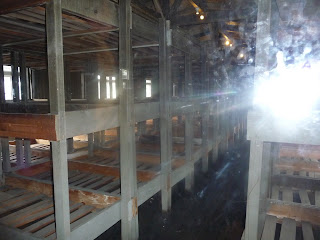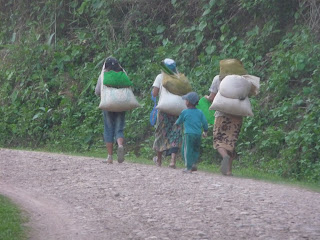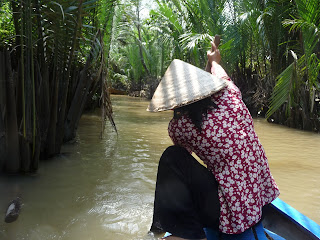


Visiting this concentration camp was very moving to me since I was in prison El Salvador during the Civil War and my husband is Jewish and his uncle was in a German concentration camp, too. The minute I walked through the gate, I felt goose pimples just to think about all the suffering that the prisoners endured in this terrible camp. Can you imagine that at the end as the Soviet army approached the camp, the prisoners were forced to march to the Baltic Sea to get on the boats to be thrown in the sea. During the walk many prisoners died of exhaustion or cold. This was the first camp to be built in 1936 and used as a model for the other camps under the supervision of SS Heinrich Himmler as chief of the German Police in 1936. More than 200,000 people were in this Sachsenhousen Concentration camp between 1936 and 1945 and about half perished. First, this camp was used for political prisoners, but the Germans soon started to send prisoners defined as racially or biological inferior. What is interesting to me is how they portrayed the Jews as stereotypes shown in Nazi publications with bald heads and big noses. Yet, many Germans have a big nose and Hitler himself didn't look like the so called Arian race, Hitler had dark hair, and brown eyes. My mother in-law told me that she used to work in a clothing store and the Germans came and destroyed the store. They didn't do anything to her and let her go because she had blue grey eyes and fair skin.
Education is so important in the world to become aware of the significance of these terrible events; unfortunately, it wasn't covered in my educational experience in El Salvador. I went to a private high school and the University of El Salvador, Central America and I never was taught about the genocide of the Jews during the second World War.
So in reality Hitler used the Jews as scapegoats and used as a pretext the
biological features of the Jews to kill then. I empathize with the prisoners in this camp since they were at the mercy of the German soldiers and they had the guns to control them. I was in prison myself so I know that it is a nightmare and that we can be killed any minute since we don't have power to defend ourselves. Like in this camp prisoners suffered so much torture, humiliation, hunger, and deprivation. I know what it is to be isolated and not be part of the society.
from
It is sad to me that the world and goverments didn't learn from this horrible genocide since there had been other genocides such as Darfort, Bosnia, and Rhuanda.
I remembered when I took a course in San Francisco State University that the teacher posed some questions about what can we do to prevent another genocide in the world. Most of us said that it was important to be active and vigilant of our government's actions and speak out against injustice.
Our friends who live in Schwerin, Germany were really nice and one of them told me that their parents told her that they didn't know what Germany was doing to the Jewish people. You don't see too many German flags around; I got the impression that many Germans feel ahamed of their country's past.














































